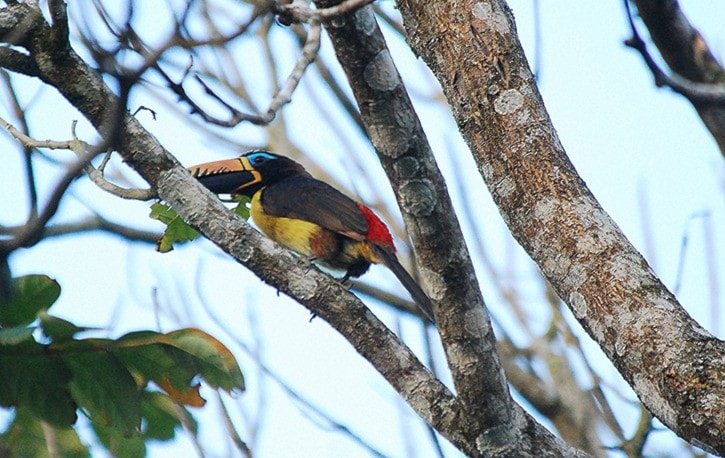Our wonderful trip through northern Peru has ended and we are now home in Nakusp.
While it’s always good to be home, Peru was a fabulous experience and our last few days were spent in the Amazon basin. Our plane landed in Iquitos where we bussed to the river. There, we boarded a boat and travelled about 90 minutes along the Amazon River to a “jungle” lodge.
This is a very large river. We were still well over 3,000 kilometres from the mouth of the river, yet the river is two to four kilometres across and 15-30 metres deep depending on the season.
Our accommodation for four nights was in a thatched roof cottage with no electricity, lit by kerosene lamps. A bit rustic, but somehow it seemed very appropriate for the location.
The temperature was warm, but not extremely hot; the humidity, however, was constantly 95-100%. You can easily work up a sweat just putting your shoes on.
Prior to our arrival in the Amazon, I had seen 283 new species of birds. But the Amazon is a completely different habitat and it felt like starting all over again. In just four days I saw an additional 87 new species.
I have been asked by several people, “What was your best bird?” It’s a very difficult question to answer and it depends upon how one measures a “good” bird.
The Wattled Guan was a huge surprise because it is such a difficult bird to actually see, but it isn’t really much to look at. On the other hand, some of parrots and toucans are not rare or hard to find but they are pretty spectacular looking birds.
My personal highlights would include: the sheer variety of hummingbirds and tanagers. Together these two families include almost 240 species in Peru. We ended up with 46 hummingbirds and 60 tanagers. Another highlight were the parrots; we saw 17 different species. And toucans: they just seem so “tropical”.
The picture I have included this week is a Lettered Aracari, one of the toucans. This bird was nesting in a hollow in a tree outside our hotel in Tarapoto.
Perhaps the most unusual looking bird we saw was the Andean Cock-of-the-Rock. This odd-looking bird, with an equally odd name, is a bright red bird and was encountered two or three times in the tropical rain forests. I don’t have a picture of it, but there is one at this site if you want to see it. (tropicalnaturetravel.com/travel/lodges/cock-of-the-rock.html)
Following our days in the Amazon jungle, we flew back to Lima for our last two days. The first was spent – birding of course! But on the very last day we all became tourists. We went into town and visited a museum and the markets. So I came home with a list of 379 new species of birds and several souvenirs.
To put the birding into perspective, I saw a total of almost 450 species in twenty days in Peru. In 40 years of birding in Canada I have seen only 408!
